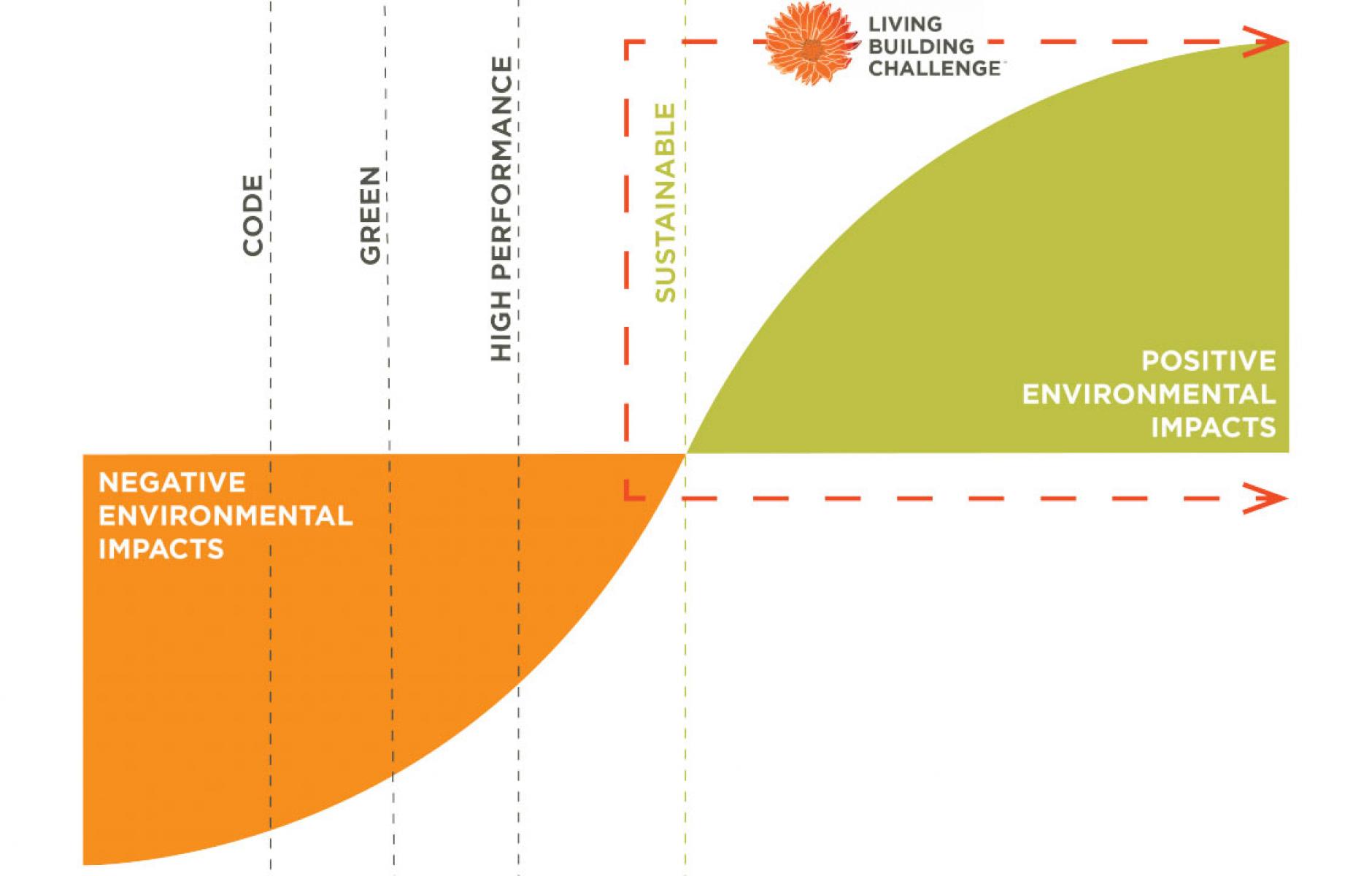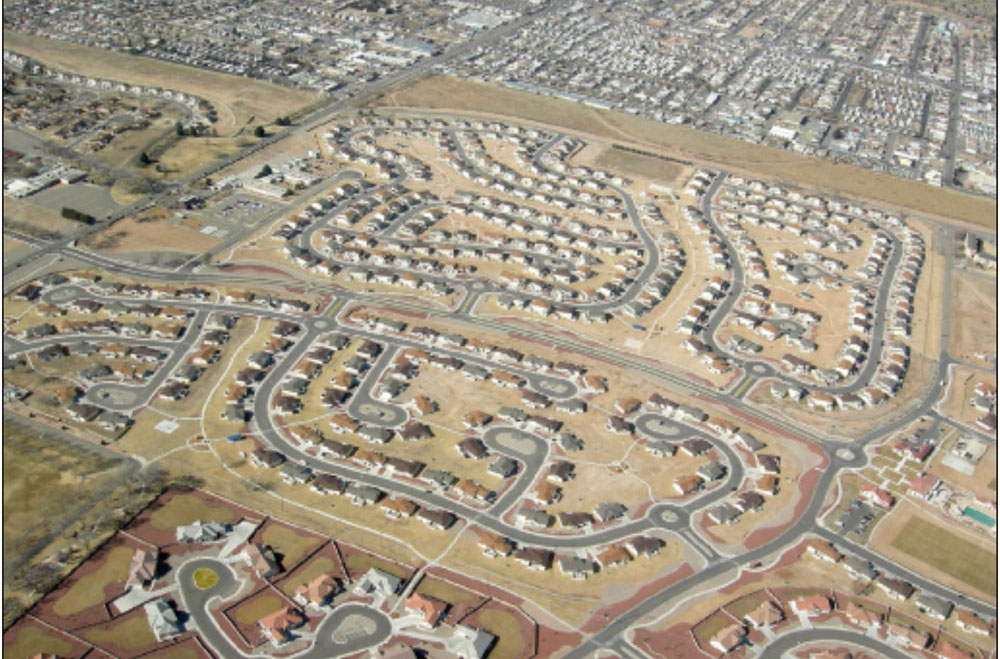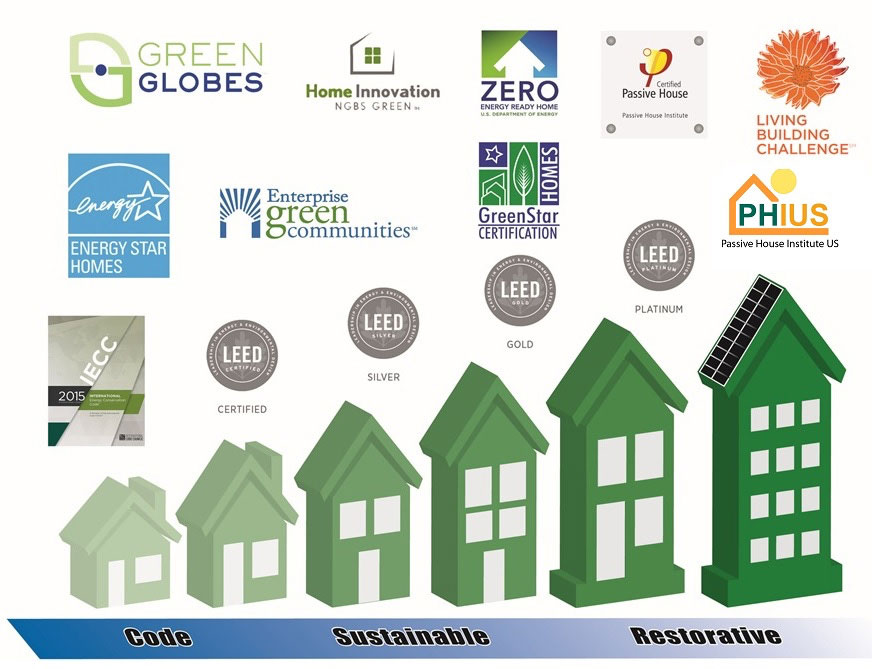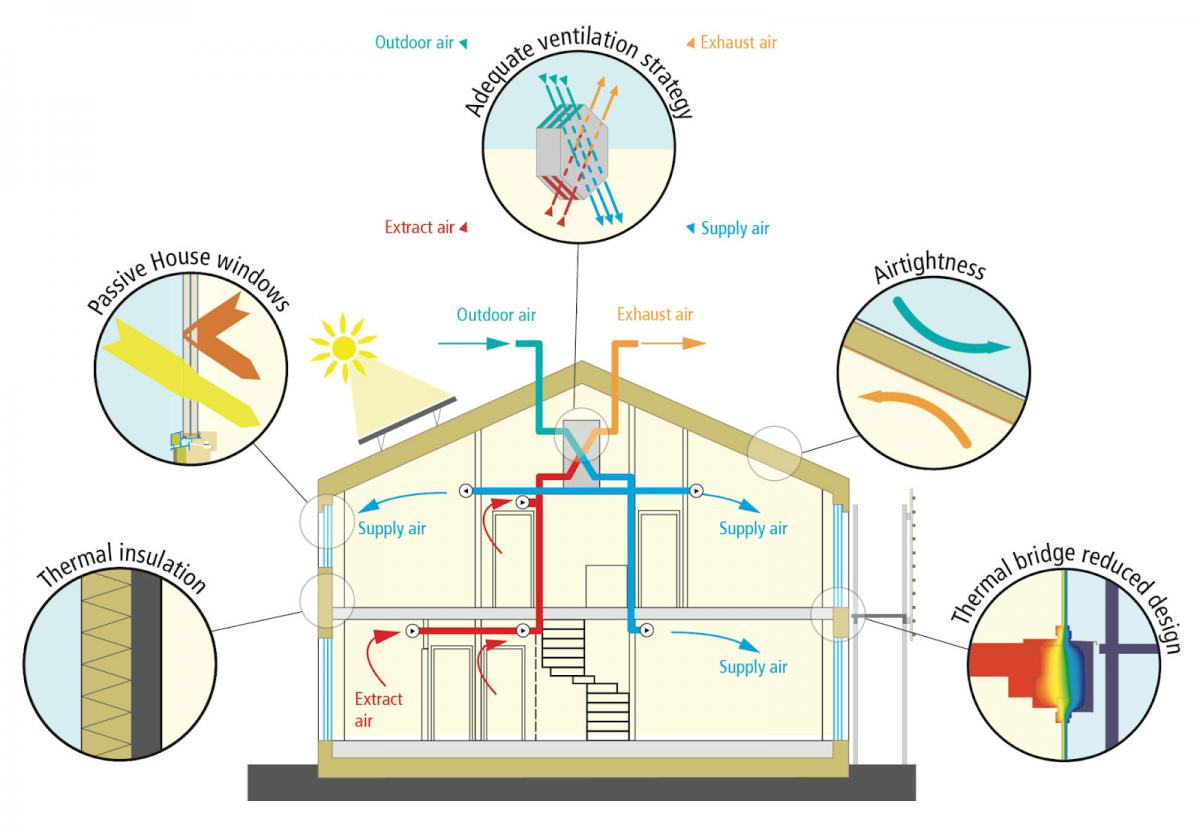
A new urbanist and a green builder walk into a bar
Note: This piece was published on the Emerging New Urbanists substack.
Say Jane, the Emerging New Urbanist, and Bob the Green Builder walked into a bar … how might the conversation unfold? Both individuals work in fields related to the built environment—urban planning and construction. They share a mission to help mitigate climate change with their work. Together, they explore how energy-efficient homes and gentle building densification can create a more walkable, decarbonized future.
Friendships like these spark ripple effects that strengthen communities. So how do individuals help model this sort of collaboration? First things first, one must learn how and where to find their Bob the Green Builder to their Jane the New Urbanist (and vice versa).
Where to find a green building buddy
- USGBC. Find a US Green Building Coalition community near you.
- Northeast USA Highlight: Register for NESEA’s BuildingEnergy Boston 2026 – the ultimate get-together for those passionate about sustainable building and energy. Bonus note to ENUers: NESEA offers “BE The Future Scholarships” to university students and some entry-level professionals—be sure to keep an eye out for the application on their website in the spring.
How to charm a green building advocate
- Carbon Convos: Bond over your love for BEAM—an open-source building materials embodied carbon calculator that is free to download today.
- “Be the Developer You Wish to See in the World” – AKA encourage your Bob the Builder to look into IncDev. Inc Dev – Incremental Development Alliance – is a nonprofit that helps small-scale developers “learn how to finance, design, and manage projects that fit your neighborhood” (Incremental Development Alliance). If the big developers won’t fund walkable, energy-efficient cities, then New Urbanists and builders can collaborate and learn to do it themselves.
How to find a new urbanist
- Look local: Use this map to find a Strong Towns local conversation or CNU chapter near you. Also, be sure to become a member of Emerging New Urbanists if you have not already. ENU’s mentorship program is open – until 9/25 – mentors and mentees welcome! The sign-up form is available here.
- Attend a Congress: Register for CNU 34 Northwest Arkansas.
How to befriend your local new urbanist
- Book club: Order them a copy of Doug Farr’s Sustainable Urbanism: Urban Design with Nature—and a copy for yourself, so you can geek out together over LEED-ND, LEED Neighborhood Development (foreshadowing alert).
- Get artsy. Invite them to do some Tactical Urbanism with you and paint a bump-out on a local curb to help slow car traffic.
With the help of the above “how-to” guides, Bob the Green Builder and Jane the New Urbanist found each other at a local sustainable urbanism bar mixer.
“What exactly is New Urbanism?” Bob the Green Builder inquired. Jane smiled kindly and shared how the movement is all about “creating sustainable, human-scaled places where people can live healthy and happy lives” (CNU). The night was young—so how did these two new friends grow together, challenge each other, and help one another build a more sustainable, less-urban-sprawly community?
Friends don’t let friends contribute to urban sprawl
Many sustainability advocates share a common goal: mitigating climate change by improving the built environment. The IPCC reports that 31 percent of global CO2 emissions stem from the building sector and 23 percent result from transportation (Jaramillo et al., 2021; Cabeza et al., 2021). Those two numbers add up to 54 percent of global CO2 emissions. Inefficient buildings and heavy car dependence lead to increased carbon pollution. Car-centric cities “drive” hand in hand with urban sprawl. The solution? Thoughtful, well-planned, walkable, gentle densification that communities love.

Proximity is paramount. Urbanism centers on the space between buildings. Creating “walkable density” is key to mitigating the effect of urban sprawl. “Walkable density” is urban density that is “thoughtfully designed and strategically located” (Dixon et. al, 2025). New Urbanists can help empower builders to consider the impact of various building types on the layout of a community.
Jane the Urbanist swirled her drink. “I see your sustainable building vision, Bob, but I just cannot help but think about the elephant in the room—If one makes their building super energy efficient, but gives no thought as to how it might contribute to urban sprawl, there is still a considerable amount of carbon being released into the atmosphere.”
“I hear ya, Jane—what small step could I take to help?” Bob said. The two brainstormed together, and with Jane’s guidance, Bob had an epiphany, “I know! The next time we are in a design meeting at work, maybe I can suggest we explore doing a triplex instead of three single-family homes.” Jane smiled brightly. “I like the way you’re thinking,” she said.
How passive house is LEEDing the way
If LEED is the present, then Passive House is the future. LEED is a great place to start, but it is merely one of many thoughtfully-designed building rating systems. Some individuals – architects, builders, and clients alike – are advocating for a shift towards more advanced energy efficiency rating systems. These standards and certifications range from bare-minimum code all the way to restorative standards. In the diagram below, the rigor of each building standard increases from left to right.

“But what about the cost?” Restorative building practices mean financial return on investment. For example, the energy efficiency of Passive House standards may save homeowners energy in the longterm. Passive House was founded upon five key design standards, including thermal insulation and building airtightness (Phius Passive Building, n.d.). One research study found that “[t]he resulting annual energy demand for space conditioning of the Passive Houses [was] 75 to 95 percent lower than that of a traditionally insulated building of the same geometry” (Schnieders et al., 2015). That translates to permanent savings on energy bills for the homeowner and increased resale value. For example, one of the houses examined in a research study done in South Korea saw net savings of $10,556 over an operating period of 27 years (Shim et al., 2018). Thus, financially competitive certifications like Passive House can help move the sustainable building needle.
Not only is Passive House good for the homeowner’s wallet, it is also good for the planet, with some studies showing that Passive House retrofits can reduce carbon emissions by 83 percent (Moran, 2014). Thus, homeowners can feel proud of the role they play in mitigating climate change.

On the other hand, Passive House could take a few pages out of LEED’s book in terms of sustainable urbanism. LEED-ND serves as a wonderful example of what can happen when thoughtful urban planning and environmentally-conscious building design work in harmony. It stands for LEED Neighborhood Development and was engineered to “help create better, more sustainable, well-connected neighborhoods” (LEED-ND). Thus, Passive House can help LEED push the energy efficiency “building envelope,” and LEED can help challenge Passive House to expand its horizons to incorporate walkability into its framework.
Bob the Green Builder’s eyes lit up as he started to talk about the Passive House-certified home in which he lived. “I am telling you, once you go Passive, you can’t go back. Less mold, more fresh air, and so thermally comfortable (Passive, n.d.). And! I can’t hear the pesky cars on the highway anymore because of the well-insulated walls.”
Jane’s eyes widened with curiosity. “Wow, I did not know that Passive Houses were such a good investment in financial, environmental, and personal well-being. Sounds so peaceful and quiet. I can’t wait to keep learning more!”
The big idea
Synergy—a beautiful word that describes what happens when new urbanists and sustainable building advocates unite. Cambridge Dictionary explains how synergy occurs when “two companies or groups work together and achieve more success than they would separately.” Similarly, Hillary Brown describes “symbiotic exchanges” as occurring when “output from one system supports the functions of another” (Brown, 2014). Urban sprawl lessens when builders learn to advocate for walkability. Energy efficiency building projects get funded when urban planners know how to pitch them to developers. Both movements need each other’s support in order to gain the momentum needed to earn the public’s favor.
This sort of collaboration starts small – a smile, a question, or a shared drink at a bar. In a world brimming with climate anxiety and fear, Jane and Bob offer a life raft of hope – When green building advocates and New Urbanists walk into bars and work as a team… they raise the bar together.
References
- Brown, Hillary. Next Generation Infrastructure. Washington D.C., Island Press, 15 May. 2014.
- Builders for Climate Action. (n.d.). Beam Estimator. BUILDERS FOR CLIMATE ACTION. https://www.buildersforclimateaction.org/beam-estimator.html
- Cabeza, L. F., & Bai, Q. (2021, August 9). Chapter 9: Buildings. IPCC Sixth Assessment Report. https://www.ipcc.ch/report/ar6/wg3/chapter/chapter-9/#:~:text=9.1Introdu....
- CNU. (2025, August 18). CNU 34 Northwest Arkansas. Congress for the New Urbanism. https://www.cnu.org/cnu34
- CNU. (2025, June 23). Find a Chapter. Congress for the New Urbanism. https://www.cnu.org/get-involved/find-chapter
- Cruz, K. (2020, April 22). Sustainable Architecture Week – Day 3: Building Rating Systems & Certifications – what comes after LEED?. AMENTA|EMMA. https://amentaemma.com/sustainable-architecture-week-day-3-building-rati...
- David Dixon, L. V. (2025, September 11). Why we need walkable density for cities to thrive. CNU. https://www.cnu.org/publicsquare/2025/09/09/why-we-need-walkable-density...
- Incremental Development Alliance. (n.d.). Incdev Alliance. IncDev Alliance. https://www.incrementaldevelopment.org/
- Jaramillo, P., Ribeiro, S. K., & Newman, P. (2021, August 9). Chapter 10: Transport. Intergovernmental Panel on Climate Change. https://www.ipcc.ch/report/ar6/wg3/chapter/chapter-10/
- Mieleszko, A. (2025, April 28). Paint, planters, and People Power: Indianapolis’ grassroots makeover. Strong Towns. https://www.strongtowns.org/journal/2025/4/21/paint-planters-and-people-...
- Moran, F., Blight, T., Natarajan, S., & Shea, A. (2014, June). The use of passive house planning package to reduce energy use and CO2 emissions in historic dwellings - sciencedirect. Energy and Buildings, Volume 75. https://www.sciencedirect.com/science/article/abs/pii/S0378778813008608
- Northeast Sustainable Energy Association. (n.d.). BuildingEnergy Boston 2026. NESEA. https://nesea.org/conference/buildingenergy-boston-2026
- Passive House Institute US (Phius). (n.d.). Passive Building Principles. Passive Building Principles | Phius Passive Building Principles. https://www.phius.org/passive-building/what-passive-building/passive-bui...
- Schnieders, J., Feist, W., & Rongen, L. (2015, July 20). Passive Houses for different climate zones. ScienceDirect. https://www.sciencedirect.com/science/article/abs/pii/S0378778815301481
- Shim, J., Song, D., & Kim, J. (2018, October 4). The economic feasibility of passive houses in Korea. MDPI. https://www.mdpi.com/2071-1050/10/10/3558
- Strong Towns. (n.d.). Local Conversations. Strong Towns. https://www.strongtowns.org/local
- Synergy: Definition in the Cambridge Learner’s Dictionary. Cambridge Dictionary Online. (n.d.). https://dictionary.cambridge.org/us/dictionary/learner-english/synergy
- US Green Building Council. (n.d.). USGBC Communities. USGBC. https://www.usgbc.org/organizations/community
- USGBC. (n.d.). LEED Certification for Neighborhood Development. LEED Certification for Neighborhood Development | U.S. Green Building Council. https://www.usgbc.org/leed/rating-systems/neighborhood-development
- Why: Passive house benefits. Passive House Accelerator. (n.d.). https://passivehouseaccelerator.com/passive-house/benefits




